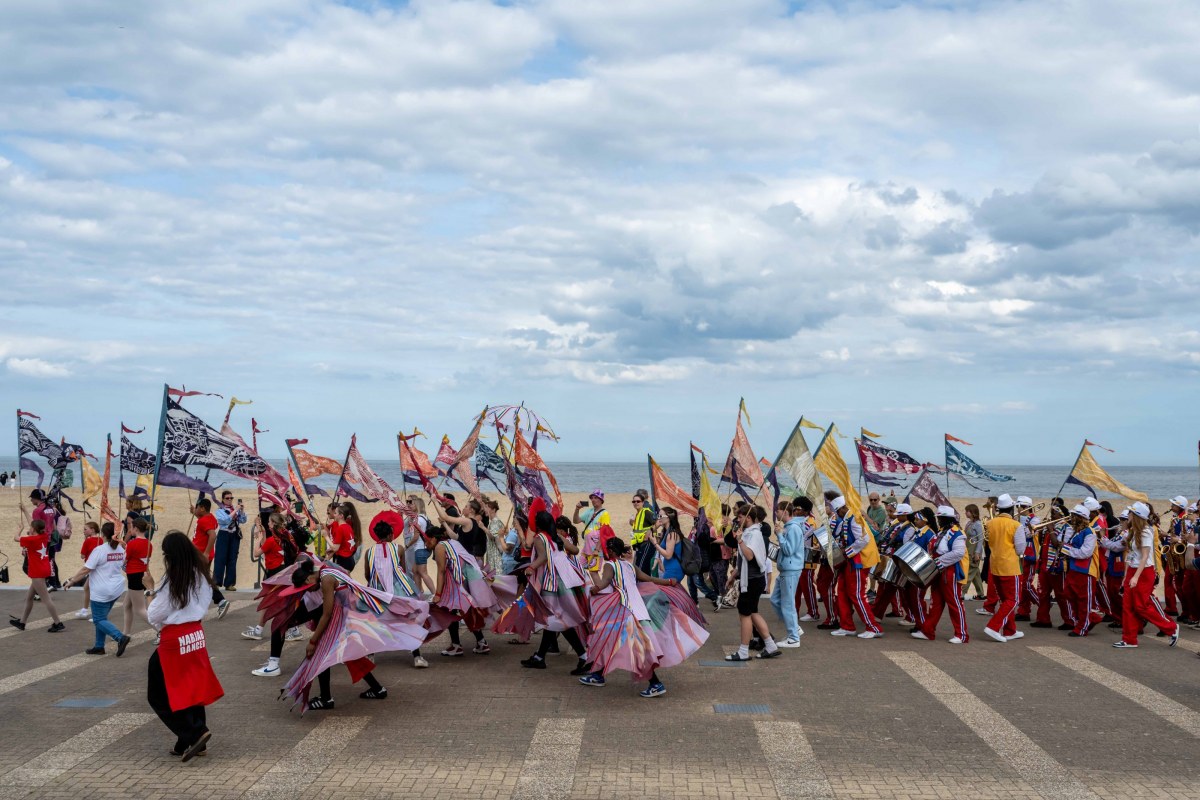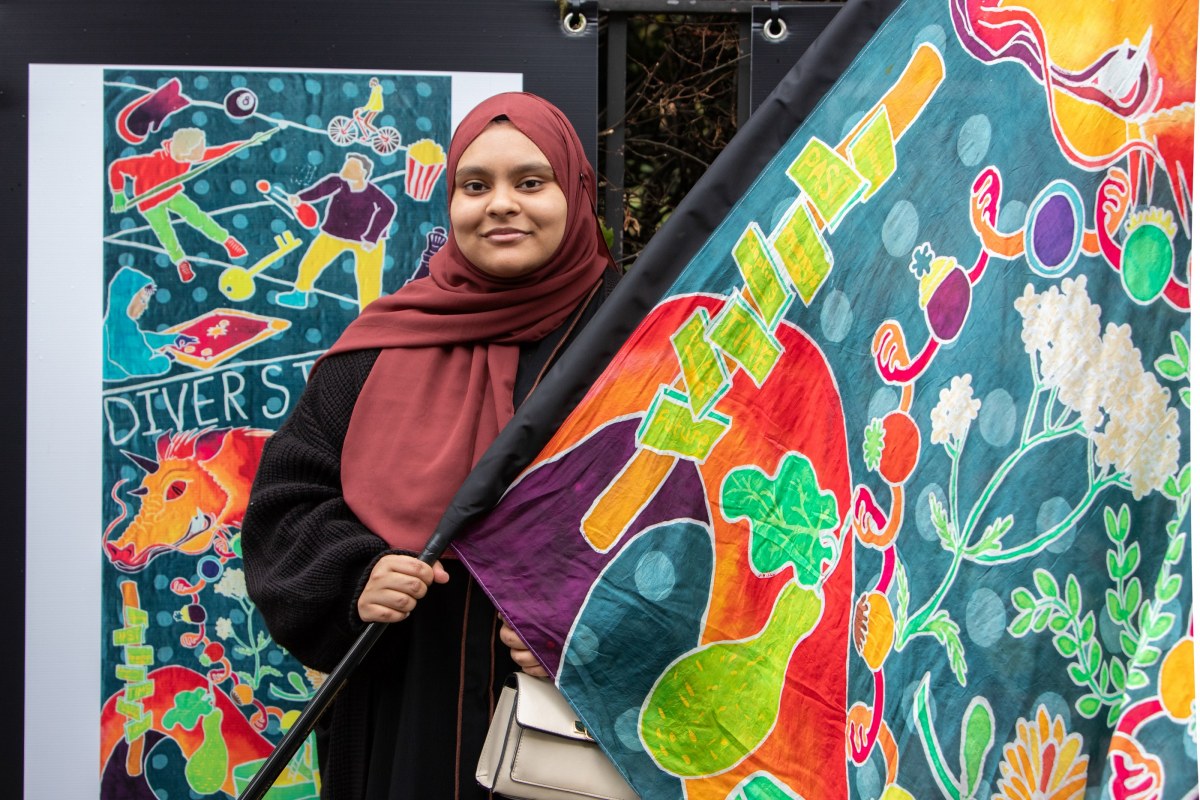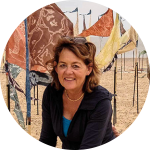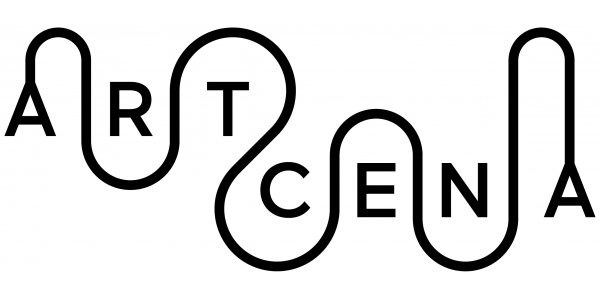FRESH STREET #5 - series of articles: Interview with Ali Pretty, Artistic Director of Kinetika
In this interview, we encounter Ali Pretty, artistic director of the UK-based non-profit organisation Kinetika whose leading Beach of Dreams, a nationwide outdoor and digital creative programme. Since its launch in 2021, the project has evolved from a 500-mile coastal walk into a poetic national artwork, weaving together silk pennants, community stories, and climate pledges. Rooted in co-creation and walking arts, Beach of Dreams invites people to reflect on their relationship with the landscape, to imagine new futures, and to take collective action. At once ritual, protest, and pilgrimage, the project transforms local voices into a shared act of hope, carried across the UK’s coastlines. This interview is part of a series of artistic interviews linked to FRESH STREET #5, the international conference for the development of outdoor arts, co-organised by Circostrada and Out There Arts, in the frame of the Out There Festival in Great Yarmouth in May 2025.
Can you introduce the Beach of Dreams project and explain how the different locations it visits contribute to its identity and evolution?
Beach of Dreams, presented by Kinetika, a non-profit organisation, is a UK-wide outdoor and digital creative programme that journeys along our coastlines. At its core, it is an open invitation to explore layered histories and vibrant cultures, to confront environmental realities and – most importantly – to dream together for the future.
We began in 2021 with a bold idea: to walk 500 miles from Lowestoft to Tilbury, one mile at a time. People were invited to adopt a mile, walk it, reflect on their connection to that place, and share a dream for its future. Each story became a silk pennant, hand-painted and dyed with natural pigments, and carried in a shared act of local leadership, movement, and imagination. What started as a walk has become a way of working, a way of seeing, a way of being in relationship with the landscape.
By 2025, Beach of Dreams had grown into a month-long festival culminating in Great Yarmouth, where 850 individually designed pennants were installed on the beach for FRESH STREET #5 and the Out There Festival. Collectively these silks, with their stories and climate pledges, form a poetic national artwork – a ripple of hope mapped along our coastline.
As the project travels, it gathers identity from each location it touches. Some describe it as ritual, others as protest or pilgrimage – but for everyone it is transformation, an embodied act of hope. Beyond the silks lies a convergence of artistic disciplines in eight new commissions across the UK – from sound to sculpture, embroidery to choreography – reflecting the richness and complexity of our coastal landscapes.
The project began with a question on the Thames foreshore, where we once came across a beach of broken wartime debris: “If this is the Beach of Broken Dreams, where is the Beach of Dreams?” In walking together, listening deeply, and creating art to be carried rather than hung on a wall, we continue to seek the answer – piecing together fragments of history and imagination to dream a different kind of future.

How did your focus on sustainability shape the direction and choices behind Beach of Dreams?
The central question running through Beach of Dreams is: “How can we creatively imagine the future of our coastline?” From the very beginning, sustainability shaped our direction. During the pilot walk in 2021, we encountered countless grassroots initiatives – beach cleans, community events, volunteering projects, and creative workshops – all quietly demonstrating that people do care and are already taking action. By 2025, our aim was to shine a light on these micro-actions and amplify them through artistic interventions, increasing people’s emotional connection to their environment and encouraging more active community engagement.
As we began curating the national programme in 2024, it quickly became clear that asking the whole UK to respond to the climate emergency in one go was overwhelming. The answer was to break down the question and create a network of artists and partner organisations. Each commission explored a global issue through the lens of a specific coastal community, shaped by local conversations and lived knowledge.
Eight artists worked across eight regions, transforming climate concerns into place-based artworks that blended imagination with lived experience. For example, at Kinetika we asked Where Does Colour Come From? – a four-year experiment into natural dyes and materials. Rahemur Rahman asked What stories does our waste tell? and worked with sewing groups to embroider foreshore debris into upcycled silks. Jason Singh asked What can be revealed if we truly listen? and brought to life the natural soundscape of the Honeycomb worm in North Wales.
Together, these works form chapters in a collective narrative of the coastline. Alongside the festival we gathered climate commitments, shared stories and pledges on a digital platform, and began building future collaborations, such as with Ocean Generation in Weymouth. Sustainability isn’t just a theme of Beach of Dreams – it is woven into its very structure, guiding both our creative process and our choices of materials, partnerships, and ways of working.

Your work with silk, especially in projects like Beach of Dreams, invites communities to co-create through painting and storytelling. How do you combine social connection and artistic expression in your practice?
With nearly three decades of experience, our practice centres on co-creation using batik on silk – a medium that is both accessible and transformative. By inviting communities of all ages, backgrounds and abilities to design, wax and paint together, the process becomes a shared act of storytelling that fosters belonging and pride, especially among marginalised groups. Participants share personal and local stories, make collective decisions about design and work side by side in a collaborative process – embedding lived experiences directly into the works.
This model has been adopted by partners and communities globally from Wales to Lebanon, and through projects such as Silk River in India and the UK, creating meaningful connections celebrating local stories and transforming collective creativity into a powerful force for social cohesion.
Why was presenting at the 2025 edition of Out There Festival important to you? How is the FRESH STREET #5 international conferences for the development of outdoor arts relevant to you?
Presenting Beach of Dreams at the 2025 Out There Festival was important because it placed the project in dialogue with a truly diverse audience, within a festival known for pushing the boundaries of outdoor arts. Our work is about connecting people to places and imagining futures together, and to do that in Great Yarmouth – a town with such a rich, layered history and a deeply engaged community – felt profoundly right. The installation of the silks as an integral part of the Beach of Dreams Village, alongside bamboo structures created by Cie Moso and Bamboology was not only a culmination of years of work, together with partners Out There Arts and Historic England, but also a moment of shared visibility: a national artwork rooted in local participation, experienced by an international audience.
Equally, being part of FRESH STREET #5 gave us the opportunity to situate Beach of Dreams within a global conversation on arts and activism. The conference brings together artists, producers, and cultural leaders from across the world, each working in different artforms, countries, and contexts. To contribute to that dialogue – to listen, share, and learn – was invaluable. It enabled us to reflect on why we make the work we do, and how others are approaching the same urgent questions: how can art in public space connect with diverse communities, respond to the climate crisis, and create meaningful change?
For us both the festival and the conference reaffirmed that Beach of Dreams is not just a local or national project, but part of a wider international movement where art, environment, and activism intersect. They provided platforms to celebrate what has been achieved so far, and to imagine new collaborations and possibilities for the future.

Ali Pretty is the Founder and Artistic Director of Kinetika, established in 1997 to unite communities through silk-based designs and public spectacles that inspire social action. With roots in carnival arts, she has collaborated on global events including WOMAD, the Olympics and Cultural Olympiads, and the Queen’s Platinum Jubilee Pageant. Since 2012 she has pioneered walking arts projects such as T100, led Silk River for the British Council UK/India Year of Culture, and now directs Beach of Dreams.






write us: infocircostrada@artcena.fr